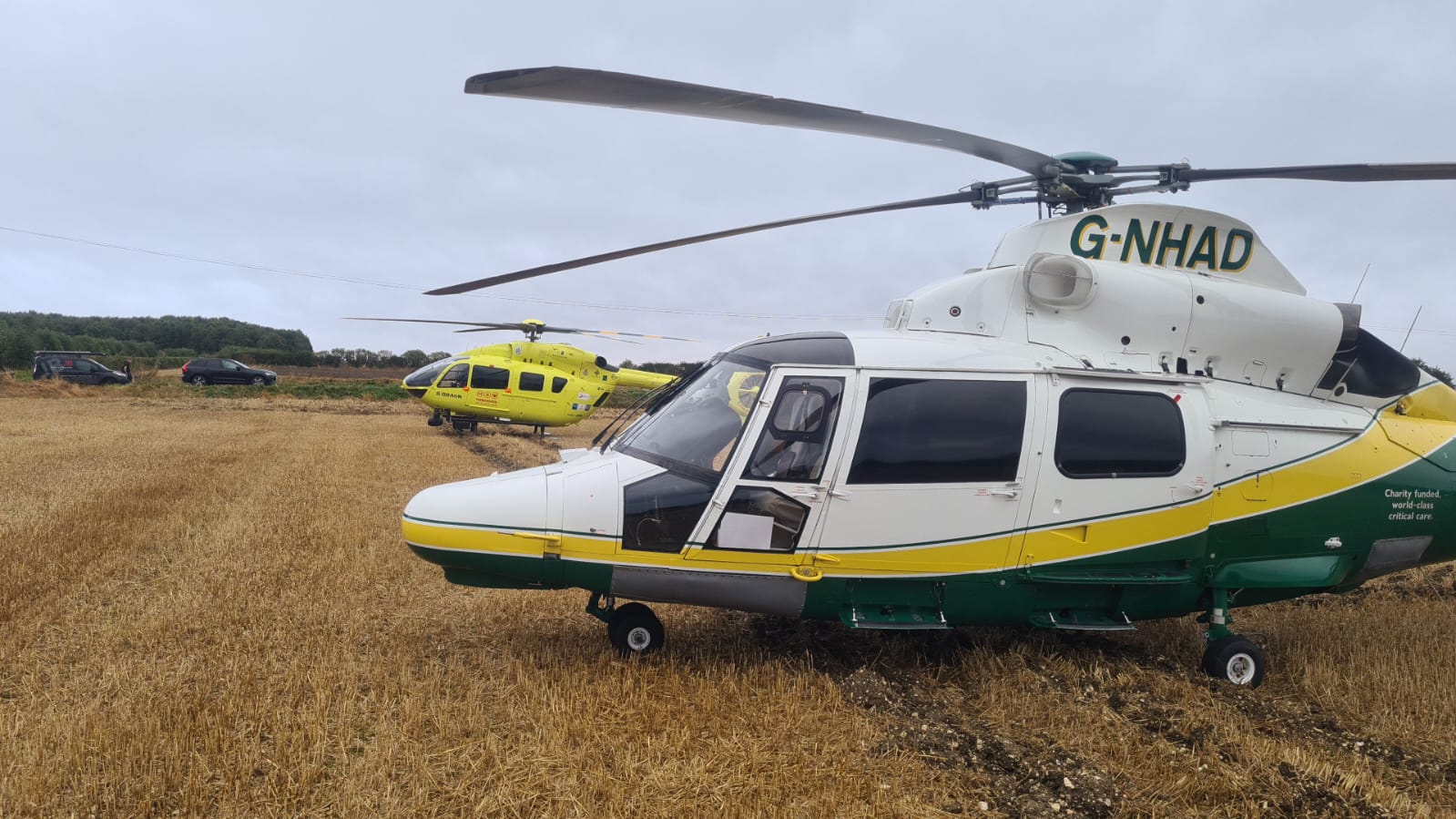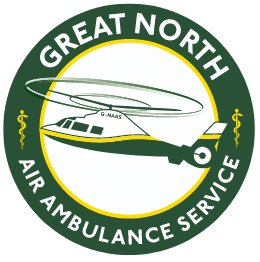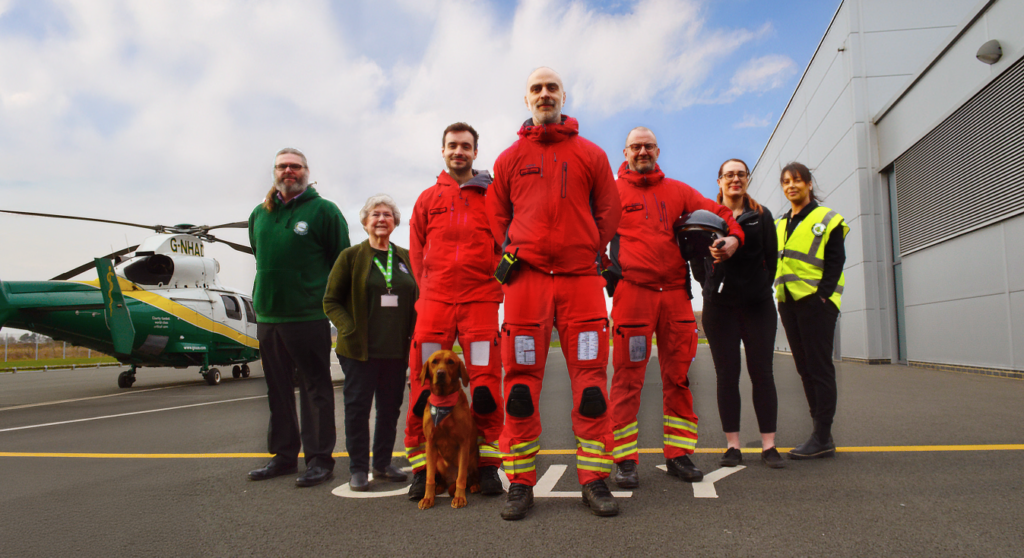One team, on scene, saving lives….
Did you know that one of our most common types of call-outs is road traffic collisions (RTC)?
When one occurs, multiple emergency services work together to provide a fast and effective response.
Here we shine the spotlight on each individual service and what they bring to the scene to give patients the best possible outcome.
The Fire Brigade
When an RTC occurs, depending on the severity, the Fire Brigade may be called to help rescue individuals trapped in vehicles.
The Fire Brigade use specialised tools like the Jaws of Life to cut through metal, and in many cases, the roof of the vehicle is cut off to allow our team to gain better access to the patient and administer the necessary pain relief.
The teams will then work together to remove them from the vehicle and place them on a stretcher, so our doctor and paramedic can provide any further treatment.


The Police
The police will attend RTC’s where someone is injured or there is a risk to other traffic on the road.
Their responsibility is to ensure the safety and wellbeing of all involved including other traffic wishing to navigate around the collision.
If our team is activated to the scene of a road traffic collision, and are responding on a helicopter, the police will coordinate closing the road to allow our helicopter to land close to the scene.
For those times when the helicopter is unable to land close by, the police have often picked up our doctor and paramedic and driven them to the scene of the incident.
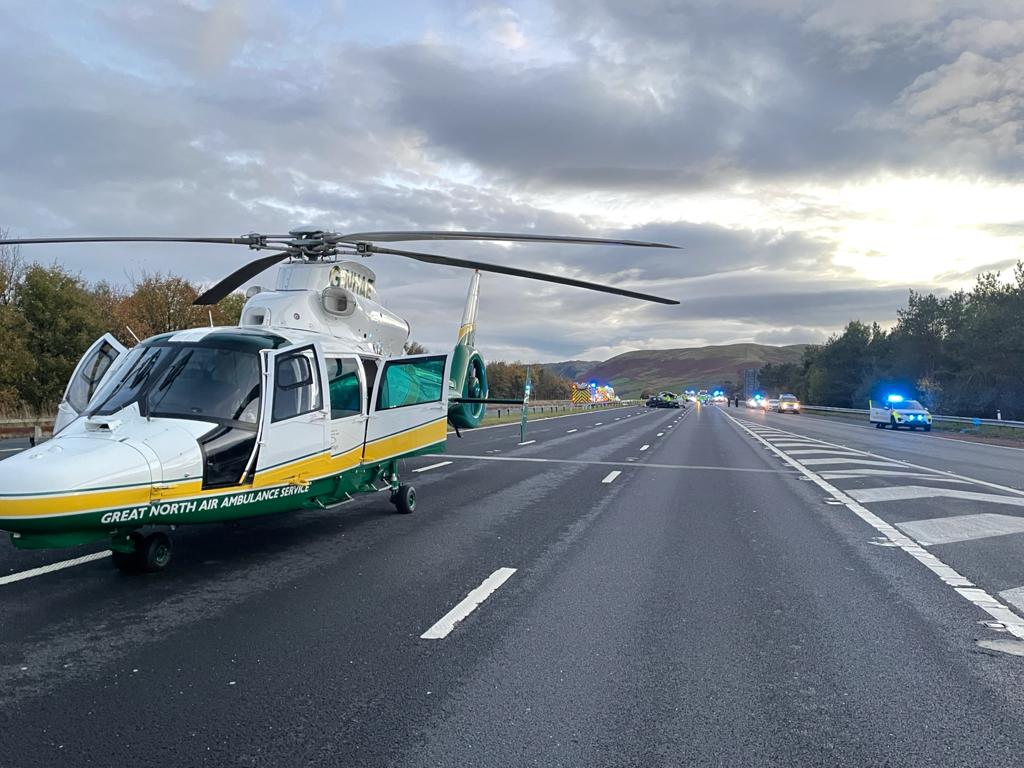

The Land Ambulance
The land ambulance paramedics often begin administering treatment to the patient, but if more critical procedures are required, then our team have the advanced training to deliver these.
Our paramedics and doctors work closely with ambulance services from across the region including in the North East, North West, North Yorkshire, Cumbria, Scotland and the Isle of Man.
Depending on the distance from the scene to the hospital, which in most cases would be a major trauma centre, and also the patient’s condition, patients may be taken to hospital in a land ambulance.
Our team will usually accompany the patient in the land ambulance and can provide medical care en route to hospital.
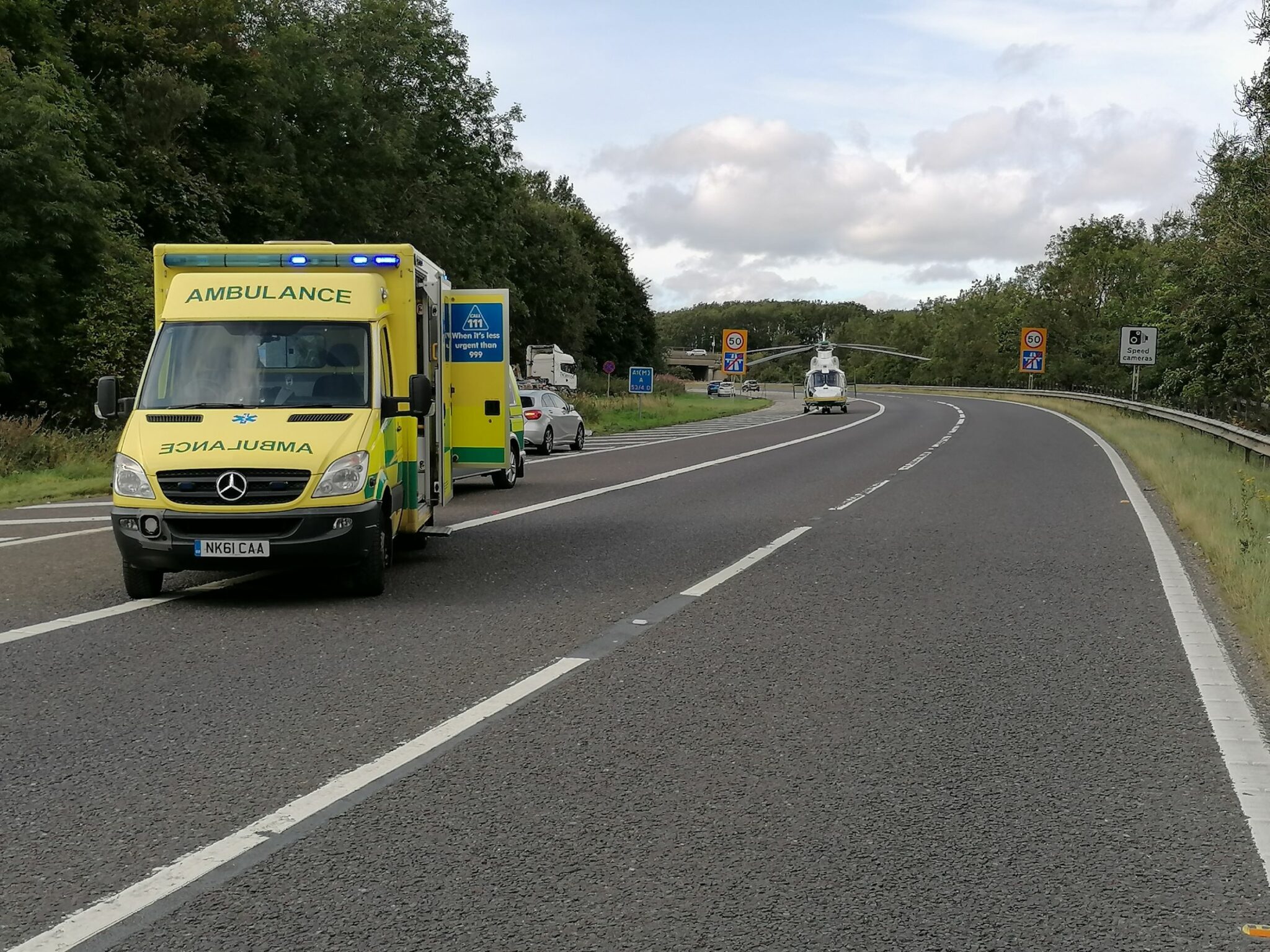

Our Critical Care Team
Our doctors and paramedics are trained to provide advanced medical care, from administering specialised drugs to inducing life-saving comas and performing complex open heart surgery.
On every mission they take the procedure and monitoring kit bags, which weigh approximately 20kg each, and contain all the medical equipment needed to help them save a patient.
Our pilots fly the helicopters which quickly get our crew and life-saving equipment to the scene, and if needed, they can transport patients to hospital.
In situations with multiple casualties, we have the capacity to dispatch both of our helicopters and crew to the scene.
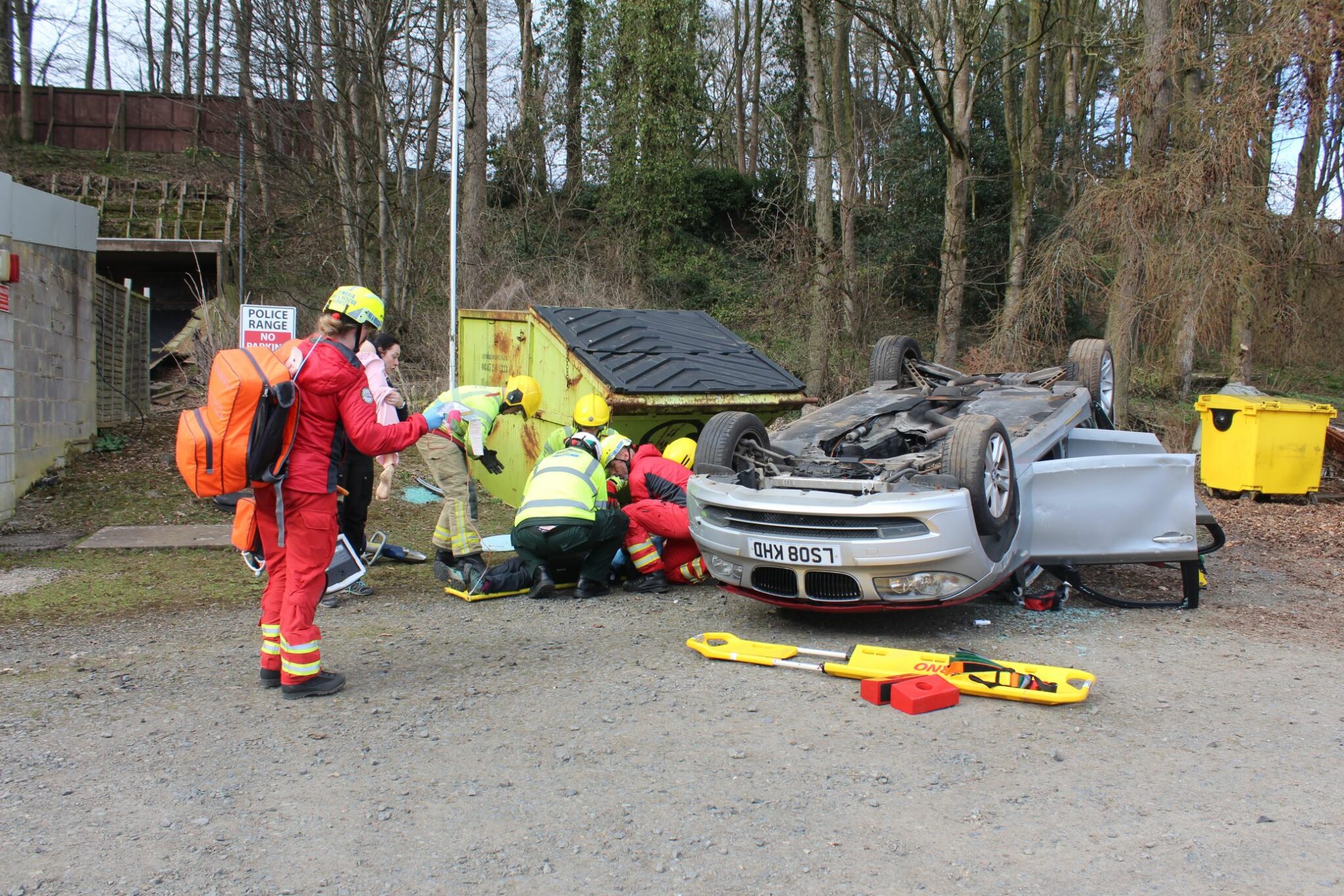

Air Ambulance Neighbours
Our critical care team cover more than 8,000 square miles including the North East, North Yorkshire, Cumbria and the Isle of Man, but they often support neighbouring air ambulance services in Scotland, Yorkshire and the North West of England.
If there has been a large incident where several people have been injured, our team will be activated to the incident to help provide treatment on scene, and if needed, airlift a patient to hospital.
There are also occasions where an air ambulance service will have two paramedics and a pilot on board their aircraft, but they require the skills of a doctor to treat a patient, so our team will be requested to assist. 